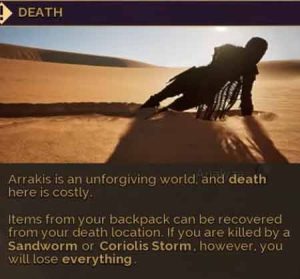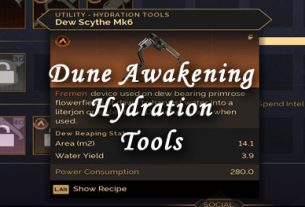As a gamer and content creator, I always get excited when a new survival game emerges, especially when it’s set in a universe as rich as Dune. Dune: Awakening is shaping up to be an ambitious open-world survival experience that combines elements of tactical combat, environmental storytelling, and resource management—all while trying to avoid getting eaten by a sandworm. Here’s everything you need to know before diving into the game.
Core Gameplay Mechanics
Thumpers & Sandworms
If you’ve read the books or seen the movies, you know that Arrakis is home to massive sandworms. In Dune: Awakening, players can craft thumpers to distract these creatures while harvesting spice and other resources. However, thumpers won’t keep you safe forever—worms will eventually track you down. The worm threat meter indicates the danger level, changing from yellow to red as the worms become more agitated. When it’s red, you better get off the sand ASAP.
Combat Mechanics
Combat in Dune: Awakening is designed to be tactical and varied. Players will have access to both active abilities (like shield barriers and poison gas capsules) and passive techniques (such as exposing weak spots on enemies for bonus damage). Weapons also play a crucial role—some are more effective against specific defenses, like slow blades piercing shields, while ranged weapons like darts won’t do the trick. There’s also a parry system, so expect some skill-based engagements.
Down But Not Out
Unlike many survival games where getting downed means instant defeat, Dune: Awakening allows players to revive themselves—if they have enough hydration. Water is a crucial survival resource, and managing it properly can be the difference between life and death.
Environmental Storytelling
The world of Arrakis isn’t just sand dunes—there are Ecolabs, abandoned shipwrecks, and other locations with deep environmental storytelling. Players can uncover lore through recordings, documents, and visual cues. Exploring thoroughly could lead to hidden loot rooms and secret passages.
Loot & Resources
The game follows a color-coded loot system, with purple for unique schematics and blue for general items. Essential resources include plant fiber, copper ore, and fuel cells, while Solaris serves as the in-game currency. Loot mechanics differ between zones: in PVE areas, loot is shared, while in PVP zones, it’s first come, first serve.
Survival & Progression
Water is as valuable as spice in Dune: Awakening. Dehydration affects stamina and movement, but players can collect and drink water using stillsuits. Character progression is deep—players can eventually learn every skill in the game, though it may take 500+ hours. You can also swap between abilities and techniques to match your playstyle.
Game Zones & Server Structure
PVE & PVP Zones
Arrakis is divided into PVE-safe zones and PVP combat zones. In PVE areas, friendly fire is off (unless you poison yourself), and if you die, your loot remains in a backpack that only you can access (except for spice and currency?). In PVP areas, friendly fire is always on, and anyone can loot your dropped items. The only exception to this is if you die from a sandworm or coriolis storm which makes you lose everything.
- Deep Deserts: Large PVP zones that reset weekly, making the world feel dynamic.
- Hagga Basins: Smaller, persistent PVP zones where players can build bases.
When creating a character, players choose which Hagga Basin to join, making it easy to play with friends. Each server hosts multiple Hagga Basins but shares one Deep Desert.
Base Raiding
While base raiding is possible, it’s not the main focus of Dune: Awakening’s PVP. Bases in the Deep Desert can be weakened by storms that knock down shields, but you’ll still need to breach the walls. PVE bases are safe from player interactions.
Essential Tips for Surviving Arrakis
- Use thumpers wisely—they buy you time, but sandworms will always come for you eventually.
- Watch the worm threat meter—when it’s red, RUN.
- Combat is tactical—use the right weapon for the situation. Slow blades beat shields!
- Shield barriers provide quick cover, but don’t rely on them too much.
- Poison gas affects you too—don’t throw it without an escape plan.
- Explore everything—hidden loot and secrets are everywhere.
- Stay hydrated—stillsuits collect water, but always monitor your levels.
- Follow the Journey system—it acts as an in-game tutorial to guide new players.
- Be mindful in PVP zones—your loot isn’t safe when you die.
- Lasguns don’t work against shields, so plan accordingly.
Community Questions Answered
- Is loot shared? Yes, in PVE zones. In PVP zones, it’s first come, first serve.
- Is friendly fire on? Only in PVP zones.
- Can I play with friends on different servers? You can see which Hagga Basin your friends are in before joining.
- Does the game support Steam Deck? This hasn’t been confirmed yet.
- Can I swap abilities anytime? Yes, players can freely change their abilities.
- When is the release date? Dune: Awakening is set to launch in early 2025.
Final Thoughts
As a long-time gamer, I can’t wait to see how Dune: Awakening evolves. The mix of survival mechanics, deep lore, and tactical combat makes it stand out among other multiplayer survival games. Whether you’re diving into the Deep Desert for high-risk rewards or building a safe haven in a PVE zone, there’s something here for every kind of player.
I’ll be covering Dune: Awakening with guides, gameplay breakdowns, and live streams—so stay tuned! What are you most excited about? Let me know in the comments or hit me up during a stream!







